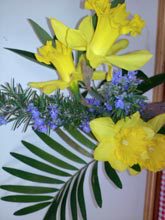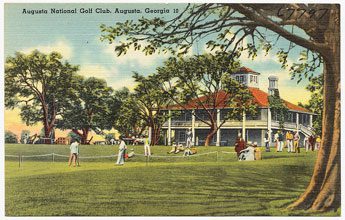 The daffodils are some of the first heralds of spring in my pass along garden. They are the alarm clock that let me know that the garden soil temperature is warming. The red maples and Carolina jessamine are also coloring the skyline and treetops.
The daffodils are some of the first heralds of spring in my pass along garden. They are the alarm clock that let me know that the garden soil temperature is warming. The red maples and Carolina jessamine are also coloring the skyline and treetops.
My big clump of rosemary is covered with pale blue clusters of flowers and the bees were lined up for rosemary nectar and pollen yesterday. Today there are some early azaleas and narcissus blooming as well. I have been a plant nerd for several decades, but I came down with “bee fever” last year. I am so much more aware of floral display, petals, pollen, arrangement and timing than ever before. At our beekeepers meetings we talk about “What’s blooming.” Now when I ride or walk I inventory blossoms. Pollinators come in all sizes and shapes and so do flowering plants. Not all plants care about attracting insects and birds to help with seed production. They may have adapted other mechanisms like wind, water or animal fur to transfer pollen and spread seeds. But the nectar and floral parts of many angiosperms are food to numerous species of small birds and insects. Who in turn are the food of larger birds, reptiles, mammals, and amphibians.
Unfortunately the very flowers that are attracting bees, wasps and flies may look like pesky weeds to the homeowner and landscaper. Henbit, clover and violets are considered weeds in turf and will be sprayed with an arsenal of chemicals to aid and abet an ecosystem that has no diversity and a very poor ecological service record. Lawn grass is a monoculture- meaning that’s the only plant desired for acres and acres across the country. You can’t eat it, and you get mad if something does. You can’t wear it or build a house with it. Instead we spend good money to plant, water, fertilize and mow it. Some of us even pay someone else to do the work for us so that we can have the best looking lawn in the neighborhood. I used to own one of those services. My son and I had a company called “My Momma Drives a Lawnmower.” We made money fertilizing, cutting and hauling off the clippings of the 50 or so lawns we maintained. From a different vantage point I would rather see homes with less lawn, more native shrubs, beds and natural areas. I would also like for lawns to be less maintained with more acceptance of wild flowers (a weed by another name), less mowing, less spraying and application of chemicals. We need to weigh costs and benefits of using chemical pesticides on our property. How much is the landscaping worth if it means killing the beneficial insects and birds that once inhabited the neighborhood?
Some reading and websites to visit for action please visit:
Bringing Nature Home by Doug Tallamy
http://www.caes.uga.edu/Publications/pubDetail.cfm?pk_id=7781&ct=attracting%20hummingbirds&kt=&pid=#Table1
http://www.pollinator.org/index.html
https://www.greatsunflower.org/node/1000010
http://www.clemson.edu/extension/beekeepers/







